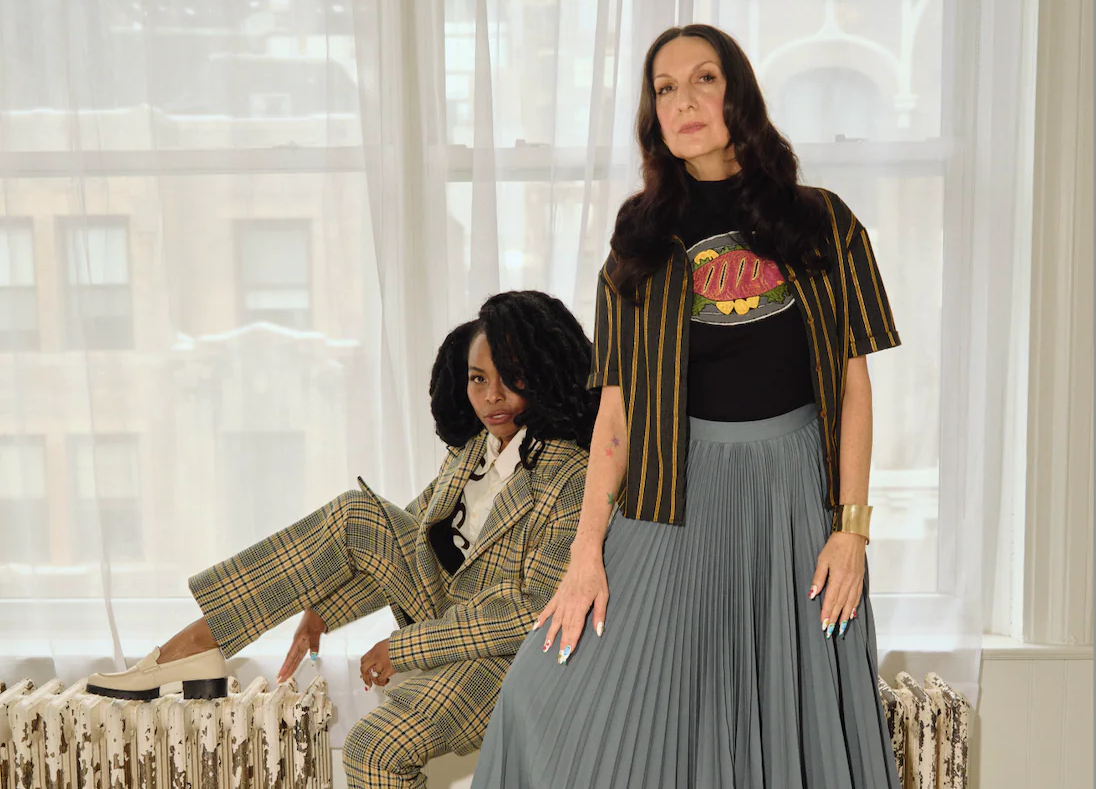Despite all the glitz and influencer photo ops, New York Fashion Week is still, at its core, a trade show for the industry. For brands, it’s an opportunity to show off what they have coming down the pipeline, both to retail buyers and to potential customers.
Emma Gage, the founder and designer of Melke, debuted at New York Fashion Week in 2023 with a runway show on the official CFDA calendar. After that buzzy debut, her collection from February of this year also made headlines for its unorthodox partnership with Hidden Valley Ranch – a collaboration notable enough to earn a breathless New York Post headline proclaiming that “New York Fashion Week has lost its glamour.”
“I was like, am I a real New Yorker now that the Post has written something mean about me?” Gage joked.
This season, Melke is one of many brands doing something smaller and more intimate to debut her collection. While still on the official calendar, Melke hosted a small presentation in the Bowery rather than a runway show. Gage said that, for her 5-year-old brand, large shows had served their purpose.
“The big events, which cost a lot of money, worked great for us,” she said. “It got our name out there, it got people talking about the brand. Big shows were really the only thing that we were putting marketing dollars into. For where we are now, I’m getting a lot more value out of pop-ups, cocktail hours, trunk shows and intimate presentations that are less splashy, more business-minded.”
Gage said she sees a lot more potential in the direct-to-consumer channel, where the majority of her sales come from, and with the brand’s specialty retail partners like Made x Hudson and Rue Saint Paul. And with all the turmoil that has affected big fashion department stores, she said she has little interest in pursuing more wholesale.
“When we first started, I was very gung-ho about getting into big retailers, and it just didn’t happen,” Gage said. “But I’m glad it didn’t. Some of the stores I was aiming for would have bankrupted me.”
For its part, Saks Fifth Avenue has delayed payment to smaller brands by months, sometimes for over a year, drawing the ire of many of the brands that were stiffed. The Vampire’s Wife, one of many independent fashion brands to shut its doors last year, closed in part due to being owed over $30,000 by online retailer MatchesFashion when it went bankrupt. In a statement announcing its closing, founder Susie Cave blamed upheaval in the wholesale market for the brand’s end.
“If I were stuck being owed even $15,000 by a big retailer and wasn’t getting it, I would cry,” Gage said. “If that happened to me three years ago, the brand would have ceased to exist.”
Another young brand on the official calendar this season was Dwarmis, a contemporary brand founded by designer Dwarmis Concepcion. Concepcion has been a designer and consultant for Ulla Johnson and Rachel Comey and worked at Tory Burch for 10 years, giving her an up-close look at how brands grow and change.
Concepcion’s presentation this season was her NYFW debut. Like Gage, she said that, for an up-and-coming brand, the event is an excellent way to raise brand awareness.
“There’s so much noise out there,” she told Glossy. “It’s really hard to create brand awareness. That’s the hardest part of the business.”
Her brand is also primarily direct-to-consumer, but her debut show has already led to conversations with buyers from fashion retailers, she said. And while wholesale is something she wants to do, she told Glossy she’s approaching it cautiously.
“We are being really careful about who we reach out to and who we work with,” Concepcion said. “We do want to do wholesale and eventually have a store, but we want to grow slow and smart. You have to be really careful as a young brand, but we’re happy to be slow and take time to do things right.”
Gage said the slow approach to scaling up wholesale is the right move for brands like hers.
“If somebody came to me right now and said they wanted to buy 10,000 dresses, I would not do that,” she said. “It’s like, can you actually sell that? And if not, are you going to mark it down? Who will be left holding the bag? I’d rather a buyer come in and buy 15 — and then, if they think it’s a good fit, then maybe we can work up to orders of 500 or 1,000.”

![Todd Snyder Spring 2026 Ready-to-Wear Runway, Fashion Show & Collection Review [PHOTOS]](https://news.charm-retirement.com/wp-content/uploads/2025/09/Todd-Snyder-runway-ss26-GG_001.jpg)
